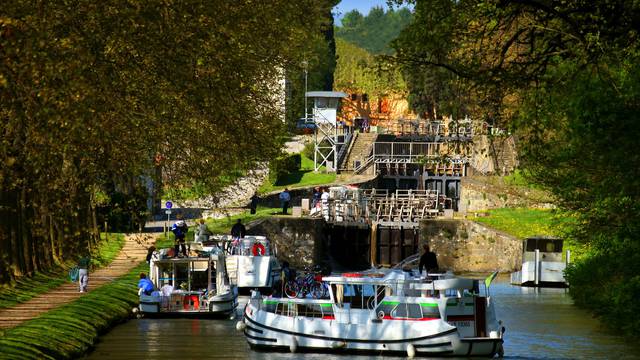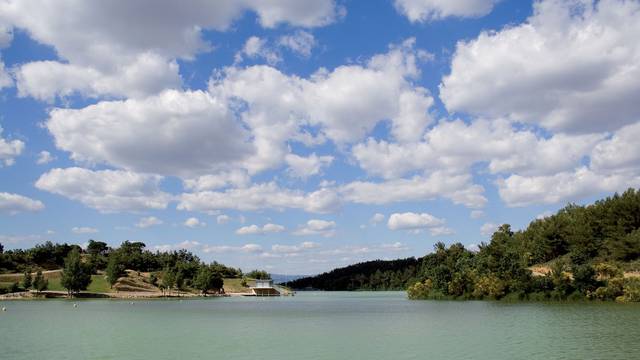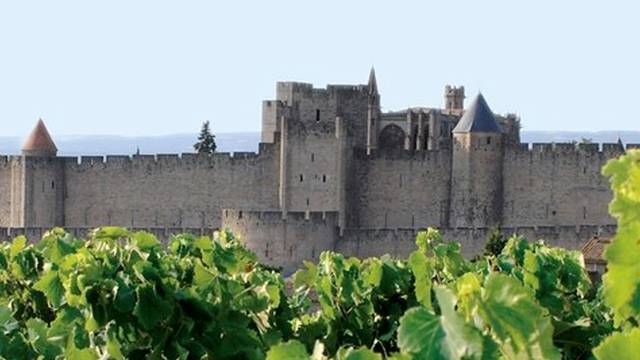History
Carcassonne has a two-part history. During the 6th century BCE, the first site was abandoned, in favour of its current location. This fortified town became the stronghold of the Later Roman Empire with the construction of a 1km city wall, flanked by 30 towers. 1000 years later, Saint Louis and his descendants had a second city wall built around the first wall. Previously the centre of power of the Trencavel viscounts, who had held their court there since 1125, Carcassonne became the jurisdiction of the Seneschal, directly linked to royal influence. We are now in the middle of the thirteenth century during the Albigensian Crusade. The Trencavel family have surrendered, but the population is worried. The Seneschal had the old buildings destroyed because they were too close to the ramparts, and he built the Lower Town on the other side of the Aude. The Upper and Lower Towns had different destinies. The ancient citadel slowly collapsed during the 15th century. La Bastide (Lower Town), by contrast, prospered thanks to a flourishing textile industry which lasted for 5 centuries. The medieval citadel was saved by JP. Cros-Mayrevieille, who had it classed as a historic monument in 1849. Viollet-le-Duc led the first restoration works. The medieval city thus became an outstanding example of an ideal Middle Age.
Things to explore
As you walk

The fortified town
In La Bastide Saint-Louis, the roads are arranged in a chequerboard pattern around the large Carnot Square, presided over by the Neptune fountain. It boasts a superb architectural heritage that includes Gothic churches, (such as Saint Michel Cathedral and the Church of Saint Vincent), 16th century bastions and numerous mansions that highlight the town's prosperity from the 14th - 18th centuries.

Le Canal du Midi
This 17th-century engineering masterpiece, designed by Pierre-Paul Riquet to link the Mediterranean to the Atlantic, is a UNESCO World Heritage Site. Initially, the people of Carcassonne did not want the canal built. The tributary that passes through Carcassonne today was constructed at the beginning of the 19th century. From the Port of Carcassonne, anyone can sail (no licence required). Alternatively, follow its famous banks by bike or on foot, watching the boats pass through the lock (find out more).

The banks of the Aude
Between the Cité and the Bastide, the isle and the banks of the Aude are a nice place for a stroll. There are various circuits, both on foot and by bike, where you can explore a varied landscape, have a picnic and cross the Way of St James. If you look up, there is a superb view over the Medieval citadel. The plains of the Aude are a site of ecological interest. The 'riparian area' - the vegetation on the banks of the river - provides shelter for numerous species, such as the European bee-eater, a beautiful multicoloured, iridescent bird. The riparian area also plays an important role in absorbing excess pollutants and stabilise the banks. In this largely wine-growing area, the sunflower has a little wild companion: the rockrose, whose flowers also follow the sun's path across the sky.
About

Cavayère Lake
Commonly known as 'Carca Plage', this lake has both thrilling and relaxing activities, water and shade, games and trees. A huge, unusually-shaped 18-hectare lake is situated in a 40-hectare park amongst pine trees and heathland. Laughter escapes from the forest: someone is walking through the trees on a pirate plank. Suddenly, a shriek: someone else has zoomed past on a giant zip line across the lake! Further away is a mini-golf course, sandy beaches and beach volleyball. On the water, pedalos gently move away from the banks, whilst children joyfully zoom down inflatable slides. This lake is 7km from Carcassonne, and was created in 1985 following a fire. This free-access Mediterranean leisure centre, can be reached by car, bus or on foot along the GR36.

Les cabanes
A little north of Carcassonne, the village of Conques-sur-Orbiel blossoms in a garrigue with intoxicating scents open to the Pyrenees and the Montagne Noire. This scrubland is home to an exceptional rural heritage: huts, or "capitelles", 45 of which have been entirely restored by the Foyer Laïque de Conques. Four circuits propose to discover these 19th century constructions, made of dry stones, that is to say without mortar or cement. Shacks with unexpected shapes, long raised walls, tell the story of the life of our great-grandparents, who cleared this territory, and built, stone after stone, these memories that today animate a solitary nature ...

Experience:Medieval Carcassonne, a castle & cobblestone walkabout
Let your imagination run wild in the castle towers, lose yourself in the narrow Medieval streets and dominate the world from the rampart walls before relaxing with a drink on one of the terraces. Yes, Carcassonne has all of this! (Find out more).

In 1898, to celebrate the 'Cadets de Gascogne', a group of famous artists, writers and politicians, Carcassonne organised a plethora of festivities. Achille Rouquet (1851-1928), himself an artist and poet, had the idea to light up the Cité by setting off Bengali fireworks. Ever since, the city has organised an incredible pyrotechnic show on the 14th July.























